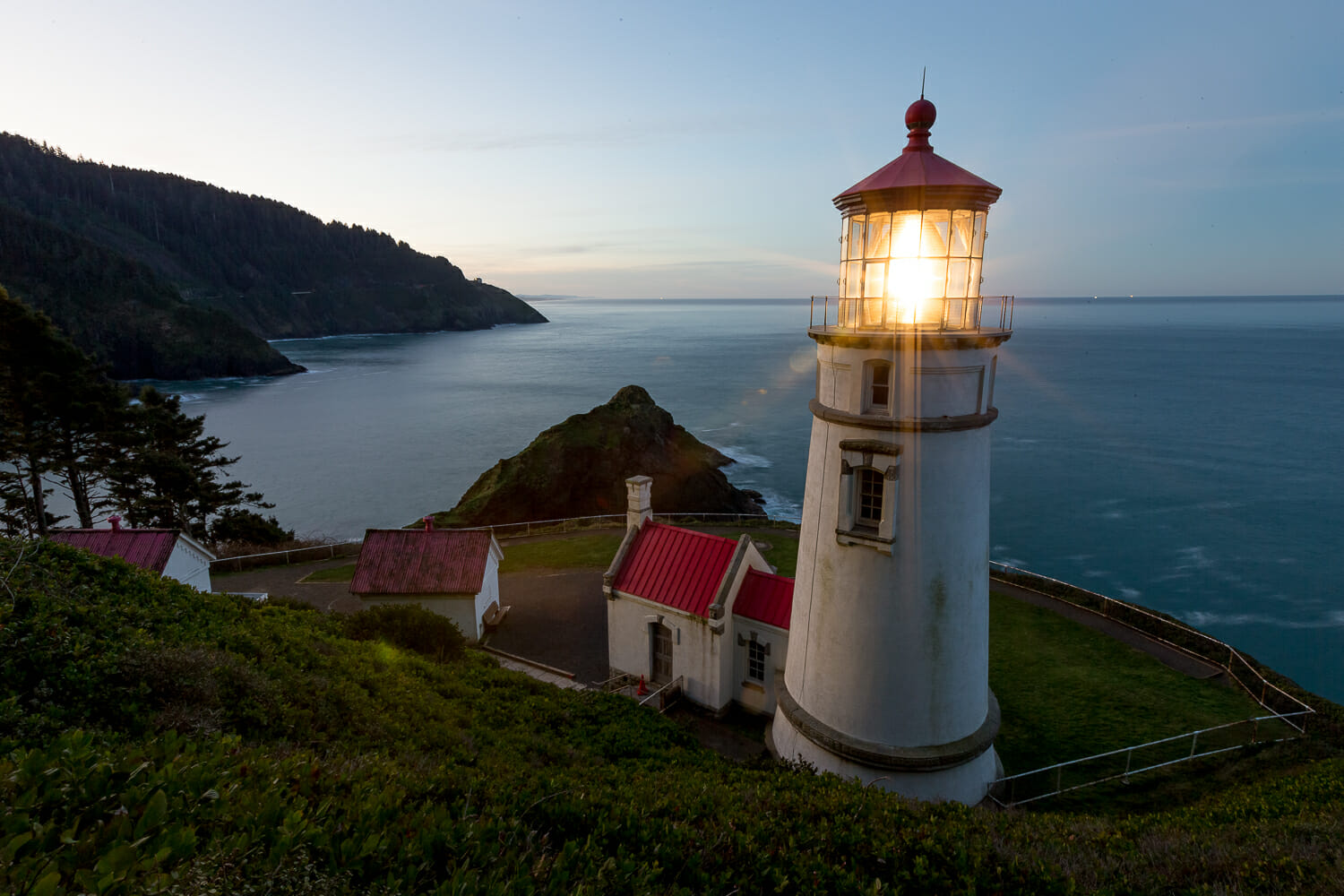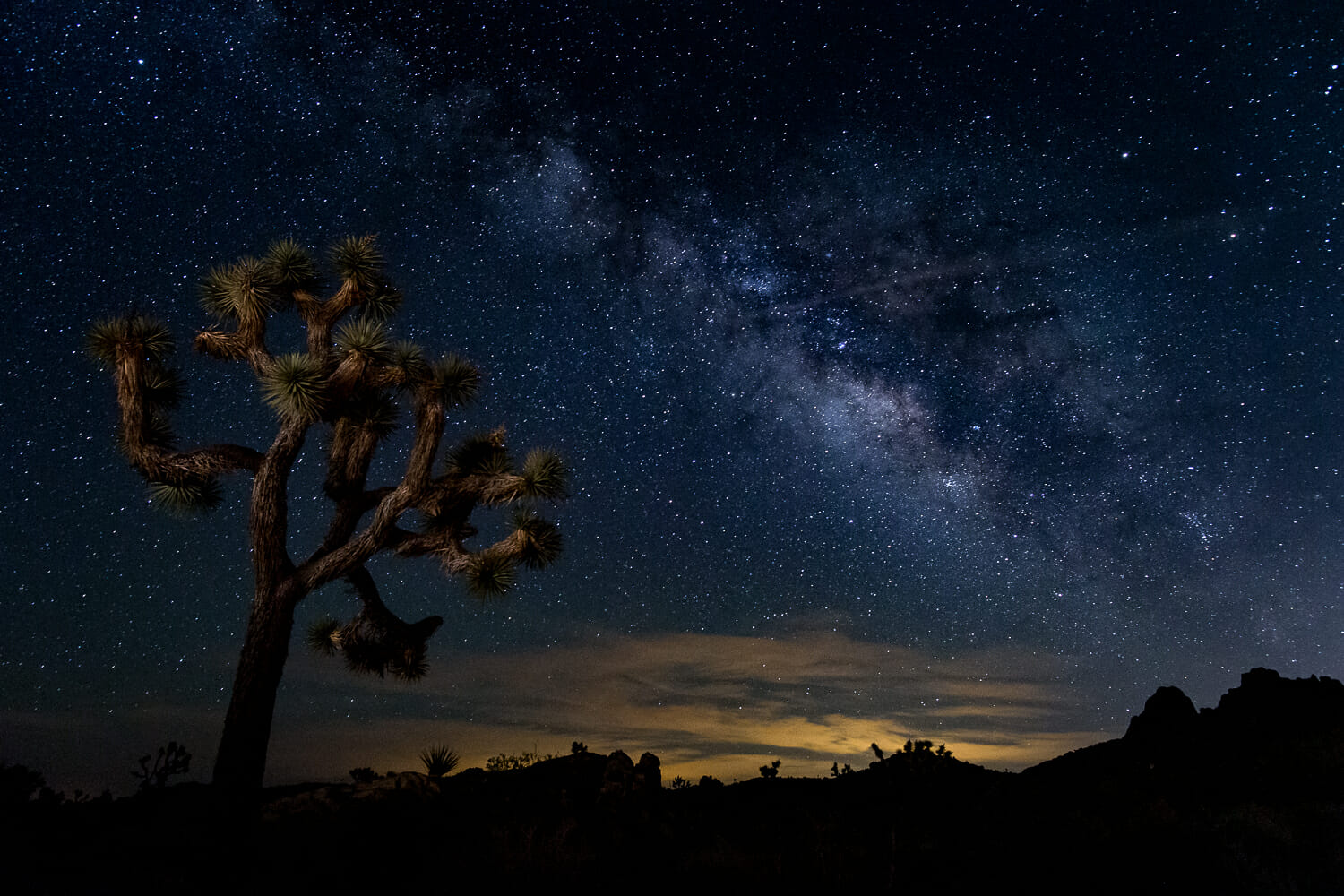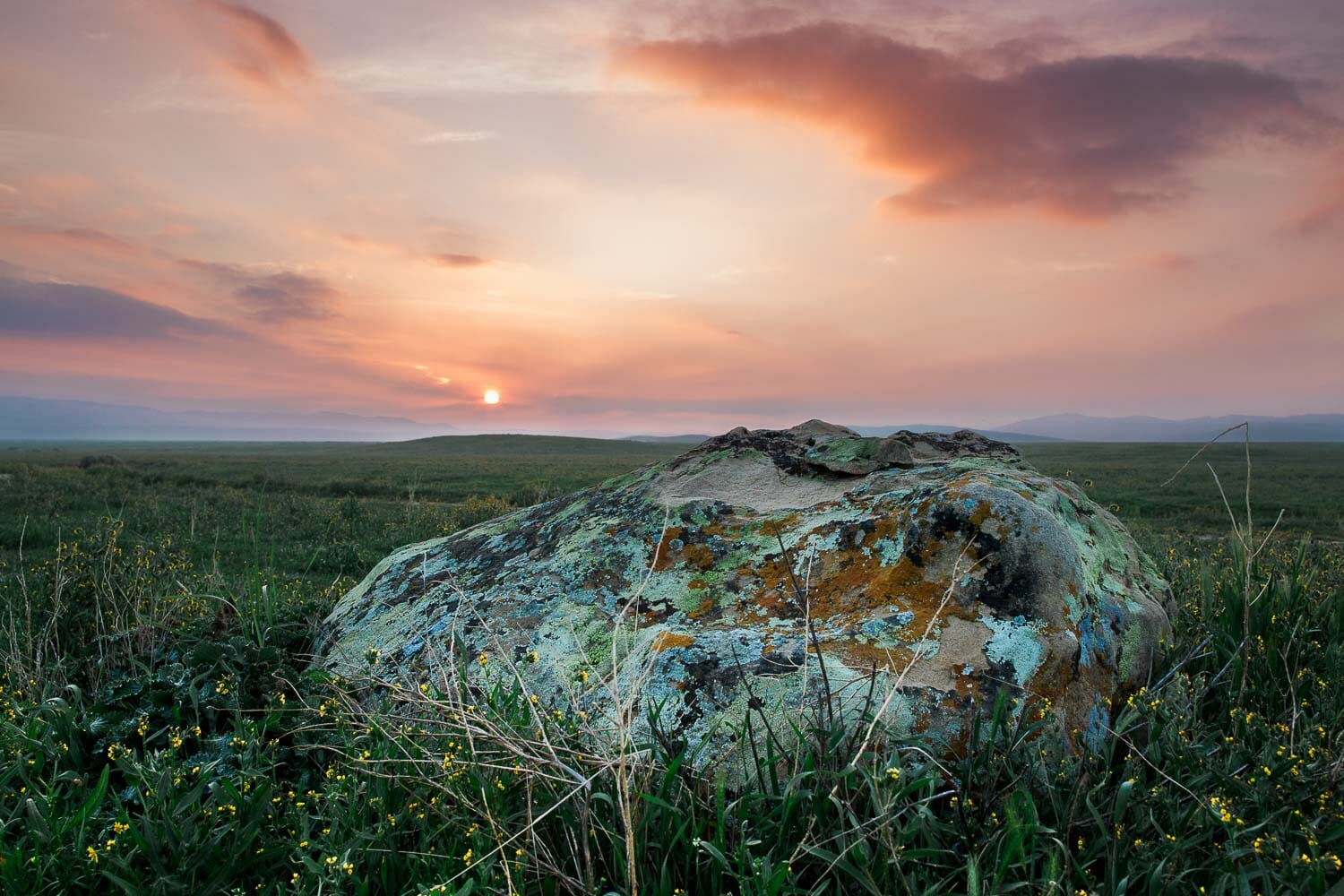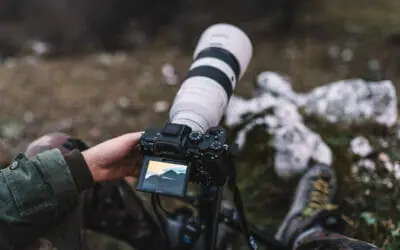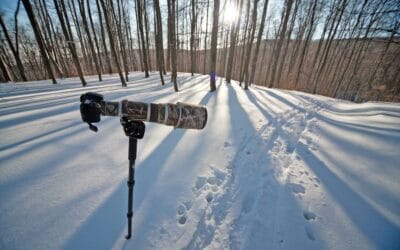Contents
There's something magical about capturing the breathtaking beauty of nature through a camera lens.
Whether you're a seasoned pro or just a nature enthusiast, landscape photography lets us freeze those gorgeous moments and share them with the world.
But to truly capture that grandeur, you need a camera that can keep up.
In this article, we'll help you navigate the vast world of the best landscape photography cameras available so you can find the perfect picture partner.
Contents
- How we picked the best cameras for landscape photography
- Sony A7R IV
- Nikon Z7 II
- Nikon D850
- Canon EOS R5
- Fujifilm GFX 50S II
- Canon 5D Mark IV
- Canon EOS 90D
- Olympus OM-1
- What to look for when shopping for the best camera body for landscape photography
- How many megapixels do you need for landscape photography?
- Is mirrorless better than DSLR for landscape photography?
- Is a full-frame camera better for landscape photography?
- How to choose the best camera for wildlife photography for YOU
How we picked the best cameras for landscape photography
We at Conservation Visual Storytellers Academy have extensive experience in nature and landscape photography. Our writers and editors use the major camera systems available and have decades of experience in the field.
To choose the best recommendations for you, we combine personal experience, insights from fellow pros and industry experts, editorial and user reviews, and details from manufacturers. We carefully weigh the pros and cons of each item and put only what we feel is the best selection available into our recommendation guides.
We've curated a selection of camera bodies meant to meet the needs of different landscape photography goals and budgets. Factors we take into consideration include weight, ISO capabilities, autofocus points, sensor sizes, and more features that allow you to have the best landscape photography experience. We also included a mix of entry-level and professional camera bodies.
For advice on what to consider in a landscape photography camera and how to choose the right camera body for you, use the table of contents to jump to those sections.
Best Cameras for Landscape Photography: Our Reviews & Recommendations
Sony A7R IV
Hands down, the full-frame Sony A7R IV is one of the best digital cameras for landscape photography
- Incredible resolution
- Expansive dynamic range
- Solid build
- Complex menu system can be daunting for beginners
- File sizes are large, requiring substantial storage
SPECIFICATIONS
- Body Type: Mirrorless
- Sensor: BSI-CMOS Full-Frame
- Effective Megapixels: 61
- Lowest ISO: 100 (expandable to 50)
- In-Body Image Stabilization: Yes
- Autofocus Points: 567
- Lens Mount: Sony E
- Weight: 1.47 lbs
- Weather Sealing: Yes
- Price Range: $$$
WHAT WE THINK
Arguably the best camera for landscape photography, the Sony A7R IV captures an astonishing level of detail.
With the highest resolution on our list at 61MP, the first full-frame back-illuminated Exmor R™ sensor, an expandable ISO sensitivity down to 50, and a dynamic range of 15 stops, the A7RIV is a top choice among professional landscape photographers for a reason.
Despite its solid build quality and weather-sealed body, the A7R IV weighs just under 1.5 lbs. The battery life is also impressive, particularly for a mirrorless, and the 5.76 million dot UXGA OLED Tru-Finder™ electronic viewfinder provides a clear and bright view.
Although it's on the pricier side, we deem this camera system a worthwhile investment for serious landscape photographers who demand the best and value top-notch performance and features.
BEST PRICES
Nikon Z7 II
This high-resolution camera is perfect for heading out into the wild and shooting landscapes
- Fast and accurate autofocus system
- Conveniently lightweight
- Large and bright viewfinder
- Expansive native lens selection
- Limited buffer capacity
- Complex menu system can be daunting for beginners
SPECIFICATIONS
- Body Type: Mirrorless
- Sensor: FX-Format BSI CMOS Sensor
- Effective Megapixels: 45.7
- Lowest ISO: 64 (expandable to 32)
- In-Body Image Stabilization: Yes
- Autofocus Points: 493
- Lens Mount: Nikon Z
- Weight: 1.5 lbs
- Weather Sealing: Yes
- Price Range: $$$
WHAT WE THINK
The Nikon Z7 II is a sophisticated yet simple full frame mirrorless camera that offers standout in-camera features and specs. A high-resolution 45.7MP BSI-CMOS sensor coupled with a low native ISO of 64 (expandable to 32) results in impressive image quality, while the 5-axis in-body stabilization and Z-mount lens glass ensure sharp images, even when handheld.
Relatively light and compact, it's not only a perfect companion for remote landscape shoots but is considered by many to be the best camera for landscape photography.
BEST PRICES
Nikon D850
A full-frame DSLR that meets the demands of even the most discerning landscape photographers
- Broad ISO sensitivity
- High resolution
- Impressive sensor resolution
- Long battery life
- Heavier weight which isn't ideal for hiking to distant vistas
SPECIFICATIONS
- Body Type: DSLR
- Sensor: FX-Format BSI CMOS Sensor
- Effective Megapixels: 45.7
- Lowest ISO: 64 (expandable to 32)
- In-Body Image Stabilization: No
- Autofocus Points: 153
- Lens Mount: Nikon F bayonet
- Weight: 2.22 lbs
- Weather Sealing: Yes
- Price Range: $$$
WHAT WE THINK
With its impressive dynamic range and high resolution, the Nikon D850 is ready to capture every moment with stunning precision. Widely regarded as one of the top DSLR cameras available for landscape photography, this robust and versatile full-frame camera consistently delivers amazing image quality.
While the D850 may be a bit on the heavier side, that's because it's built to last.
And though we wish it included in-body image stabilization, set it up on a sturdy tripod and you should be set.
Ideal for any landscape photographer, from pros to dedicated enthusiasts, wanting a great camera that delivers exceptional results
BEST PRICES
Canon EOS R5
When it comes to versatility and quality, it's hard to beat the Canon EOS R5
- Exceptional image quality
- High-resolution sensor
- Fast autofocus performance
- Robust image stabilization
- Complex menu system
SPECIFICATIONS
- Body Type: Mirrorless
- Sensor: Full-frame CMOS Sensor
- Effective Megapixels: 45
- Lowest ISO: 100 (expandable to 50)
- In-Body Image Stabilization: Yes
- Autofocus Points: 1053
- Lens Mount: Canon RF
- Weight: 1.62 lbs
- Weather Sealing: Yes
- Price Range: $$$
WHAT WE THINK
The Canon EOS R5 is a top choice as a camera for landscape photography for a reason (well, a few reasons). Foremost, with its 45MP full-frame CMOS sensor, the EOS R5 captures breathtakingly detailed and clear high-resolution images.
It excels in handling high-contrast scenes, thanks to its wide dynamic range, while its in-body image stabilization ensures sharp and blur-free images, even when shooting handheld. It flat-out has exceptional image quality!
All of this, plus its advanced autofocus system, relatively lightweight, and articulating screen, make the full frame EOS R5 one of the best landscape cameras out there.
BEST PRICES
Fujifilm GFX 50S II
Medium format favored by pros and committed amateurs alike
- Large medium format sensor
- Film simulation modes
- Comfortable ergonomics
- Two-axis tilting rear screen
- Limited lens selection
- No 4K video
SPECIFICATIONS
- Body Type: Mirrorless
- Sensor: CMOS Medium Format (43.8 x 32.9 mm)
- Effective Megapixels: 51.4
- Lowest ISO: 50
- In-Body Image Stabilization: Yes
- Autofocus Points: 117
- Lens Mount: Fujifilm G
- Weight: 2 lbs
- Weather Sealing: Yes
- Price Range: $$$
WHAT WE THINK
Fujifilm's least expensive medium format camera to date, the GFX 50S II, offers an affordable (relatively speaking, but still) entry into the medium format photography scene.
Its 51.4 MP CMOS 43.8 x 32.9 mm sensor is 70% larger than what typical full-frame cameras provide, making high resolution and incredible detail accessible to a wider range of photographers.
In an upgrade from its predecessors, Fujifilm has introduced DR Priority mode, designed to protect highlights and brighten shadows, maximizing the dynamic range in high-contrast conditions.
Despite being slightly larger than full-frame cameras, it's not overly bulky, making it a practical option for those looking to upgrade to medium-format cameras.
BEST PRICES
Canon 5D Mark IV
Full frame sensor camera for landscape photography providing excellent image quality
- Exceptional dynamic range
- Dual pixel RAW
- Built-in GPS
- Excellent low-light performance
- On the heavier side
- Limited screen articulation
SPECIFICATIONS
- Body Type: DSLR
- Sensor: CMOS Full-frame
- Effective Megapixels: 30.4
- Lowest ISO: 100 (expandable to 50)
- In-Body Image Stabilization: No
- Autofocus Points: 61
- Lens Mount: Canon EF
- Weight: 1.96 lbs
- Weather Sealing: Yes
- Price Range: $$
WHAT WE THINK
An ol' reliable, the Canon 5D Mark IV. This full-frame DSLR is an exceptional choice for landscape photography, delivering striking detail and resolution, thanks in part to its 30.4MP sensor and impressive dynamic range.
Further enhancing its effectiveness in landscape photography, the Mark IV uses a 150,000-pixel RGB+IR metering sensor for accurate exposures under diverse lighting conditions, while the High Density Reticular AF system features 61 phase-detect points, providing comprehensive coverage and impressive tracking abilities even when shooting in low-light conditions.
The 5D Mark IV is a dependable and versatile tool for photography enthusiasts and professionals alike.
BEST PRICES
Canon EOS 90D
The Canon EOS 90D is a compact camera that delivers maximum image quality
- Variety of affordable lens options
- Long battery life
- 4K video recording
- Weather-resistant construction
- Limited buffer capacity
- No in-body stabilization
SPECIFICATIONS
- Body Type: DSLR
- Sensor: CMOS APS-C (22.3 x 14.9 mm)
- Effective Megapixels: 32.5
- Lowest ISO: 100
- In-Body Image Stabilization: No
- Autofocus Points: 45
- Lens Mount: Canon EF/EF-S
- Weight: 1.55 lbs
- Weather Sealing: Yes
- Price Range: $
WHAT WE THINK
The Canon EOS 90D serves as an excellent starting point for those new to landscape photography looking for a versatile camera that balances cost and quality.
While its crop sensor isn't typically our first choice for landscapes, the EOS 90D's impressive camera features include a densely packed APS-C sensor, offering solid image quality coupled with a satisfactory amount of dynamic range.
Plus, the ergonomics of this camera are about as user-friendly as its intuitive control scheme and an easy-to-use menu.
We also love that this camera has incredible battery life compared to many competitors.
The Canon EOS 90D strikes a compelling balance of price, performance, and functionality, making it an excellent budget camera choice for landscape photography enthusiasts.
BEST PRICES
Olympus OM-1
A rugged mirrorless camera made for shooting landscapes
- Solid resolution
- Respectable low-light performance
- 4K video recording
- Durable, weather-sealed body
- Limited battery life
SPECIFICATIONS
- Body Type: Mirrorless
- Sensor: Stacked BSI Live MOS Four Thirds
- Effective Megapixels: 20.4
- Lowest ISO: 200 (expandable to 80)
- In-Body Image Stabilization: Yes
- Autofocus Points: 1053
- Lens Mount: Olympus OM Four Thirds
- Weight: 1.32 lbs
- Weather Sealing: Yes
- Price Range: $$
WHAT WE THINK
The Olympus OM-1 is a top choice for landscape photography, even with its Micro Four Thirds configuration. Its commendable dynamic range allows it to perform well in low-light conditions, and though the resolution isn't the best on our list, the image quality is still very impressive.
The weather-sealed, robust build with rugged buttons, switches, and dials of this relatively compact camera make it an ideal side-kick during intense weather conditions.
Despite some very limited limitations, the OM-1 is a balanced and relatively affordable option for any dedicated landscape photographer.
BEST PRICES
Photo: Jaymi Heimbuch
What to look for when shopping for the best camera for landscape photography
First and foremost, the sensor size is vital – full-frame or medium format sensors often deliver superior dynamic range and detail, capturing the breathtaking beauty of landscapes more accurately.
That said, don't rule out APS-C or Micro Four Thirds sensors, as they can still deliver excellent results.
Second, the camera's resolution matters – a higher megapixel count means more detailed images. But megapixels aren't everything; the quality of those pixels is just as important, so also take a look at the camera's dynamic range, color rendering, and low-light performance.
Next, check out the camera's build quality. Given that landscape photography often involves shooting in wild and challenging weather conditions, ensure the camera is robust and weather-sealed.
And finally, consider the lens system. Make sure the manufacturer offers a wide range of lenses, from ultra-wide-angle options for sweeping vistas to telephoto lenses for capturing distant landmarks.
Balancing all these factors with your budget will help you pick the best landscape camera for you.
Recommended: Every great landscape photography camera body needs an excellent lens to go with it. Check out our top recommendations for the best lenses for landscape photography.
Photo: Jaymi Heimbuch
How many megapixels do you need for landscape photography?
While the number of megapixels you need depends on how you plan to use your photos, for most landscape photographers, a camera with 12 to 24 megapixels will do the trick. This range gives you enough resolution to capture details and print your images in large sizes without compromising quality.
However, if you plan on printing your photos on a massive scale – such as billboards or big hotel lobby prints – or if you think you'll do extensive cropping in post-processing, consider a camera with higher megapixel counts.
Photo: Jaymi Heimbuch
Is mirrorless better than DSLR for landscape photography?
Well, the truth is, both have their merits, and it ultimately comes down to personal preference. Let's break it down.
DSLRs (Digital Single-Lens Reflex) have long been the go-to choice for many landscape photographers. With their optical viewfinders and robust lens options, they offer a traditional shooting experience that's hard to beat. While their superb battery life helps on long shoots, the fact that they're often a bit bulky and heavy isn't as helpful.
On the other hand, mirrorless cameras have been gaining popularity in recent years, and for good reason. These sleek and compact cameras offer a lighter alternative without compromising on image quality. With their electronic viewfinders, you get a real-time preview of your shot, allowing you to fine-tune your composition on the fly.
However, their battery life is typically not as impressive as their DSLR counterparts, and the lens selection might not be as extensive (yet!).
Ultimately, the choice between mirrorless and DSLR boils down to your shooting style, preferences, and budget. If you're a traditionalist who values the heft and robustness of a DSLR, go for it!
But if you crave a lightweight and nimble setup that doesn't compromise on image quality, a mirrorless camera might be your perfect match.
Here's our in-depth comparison in the mirrorless vs DSLR debate if you'd like to get deeper into the weeds.
Is a full-frame camera better for landscape photography?
Full-frame sensors, larger than the APS-C or Micro Four Thirds sensors, often deliver superior dynamic range and detail as they can capture more light, resulting in clearer, more detailed images, especially in low-light conditions.
As we mentioned earlier, though, don't completely rule out cameras with smaller sensors, as there's a lot more to creating impressive images than sensor size alone.
Larger than full frame are medium format cameras. While these tend to be more expensive and less common than full-frame models, they offer an even larger sensor, which means even more detail and a wider dynamic range. With a medium format camera, each shot captures a stunning amount of detail.
However, these cameras are typically heavier and bulkier.
To sum up, a long answer to a short question, yes, a full frame is often a better choice than a crop sensor for landscape photography.
Photo: Jaymi Heimbuch
How to choose the best camera for wildlife photography for YOU
Choosing the best landscape photography camera for you hinges on your needs, preferences, and budget.
When deciding, keep the following points in mind:
First, consider the sensor size and resolution that best suits your needs – full-frame sensors are great but don't discount APS-C or Micro Four Thirds, and remember, it's not just about the number of megapixels, but the quality of them.
Second, scrutinize the camera's build. Can it withstand the rigors of outdoor shooting? Are you the type of photographer who loves to get out into the elements and photograph stormy or snowy landscapes? If so, a robust, weather-sealed camera body is a must.
Additionally, consider the camera's ergonomics and ease of use. Is it comfortable to hold? Are the controls intuitive and easy to reach? Remember, a camera that feels good in your hands and is simple to operate will make your shooting experience infinitely more enjoyable.
Don't forget about the camera's weight. Landscape photography often involves a lot of trekking, so a lighter camera can be a huge advantage. However, if you don't mind carrying around a bit of extra weight and prefer a heftier, more solid feel, then a larger, more robust camera might be a better fit for you.
What type of landscape images do you love to make the most? High ISO performance is crucial for those who plan on doing a lot of low-light or nighttime photography. If you're the type to create landscapes in the wee hours, a camera capable of high ISO settings without much noise is a must.
Just remember, there is no ‘one size fits all' solution when it comes to choosing the best camera for landscape photography. It's all about finding the right balance between your needs and your budget.










